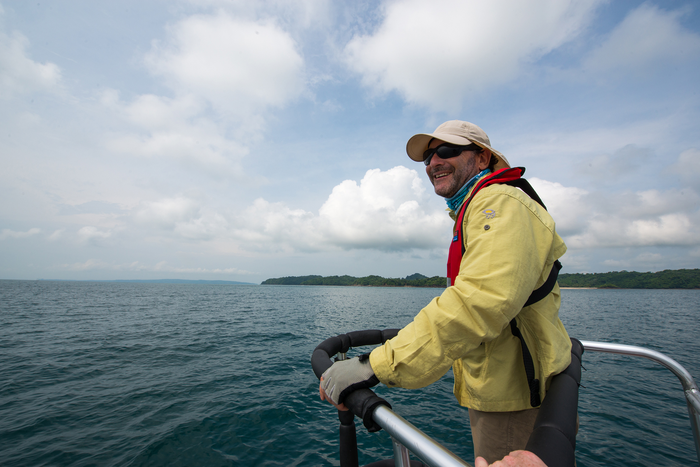Last year, Panama expanded the Cordillera de Coiba marine protected area from 17,223 to 67,908 square kilometers (6,650 to 26,219 square miles). On April 27th, an international scientific expedition made up of researchers and students from the Smithsonian Tropical Research Institute (STRI), MigraMar, the International Maritime University of Panama (UMIP), the University of Costa Rica and the Ministry of the Environment will set sail on the first mission to explore the seamounts of this protected area.

Credit: Sean Mattson, Smithsonian Tropical Research Institute
Last year, Panama expanded the Cordillera de Coiba marine protected area from 17,223 to 67,908 square kilometers (6,650 to 26,219 square miles). On April 27th, an international scientific expedition made up of researchers and students from the Smithsonian Tropical Research Institute (STRI), MigraMar, the International Maritime University of Panama (UMIP), the University of Costa Rica and the Ministry of the Environment will set sail on the first mission to explore the seamounts of this protected area.
The scientists will conduct daily dives to depths of up to 450 meters, using a manned submarine, and deploy baited remote underwater video systems (BRUVs) several times a day to document the important biodiversity inhabiting the seamounts in the Cordillera de Coiba, located over 60 miles south of the Coiba National Park, a UNESCO World Heritage Site. The results of this expedition will help better focus the efforts aimed at the management of the marine protected area.
With the expansion of the Cordillera de Coiba marine protected area, Panama fulfilled its commitment to protect 30% of its oceans by 2030, an initiative of the Global Biodiversity Framework. This action also improves the connectivity of the Eastern Tropical Pacific Marine Corridor and strengthens the conservation and sustainable use of protected waters between Isla de Coco in Costa Rica, Galapagos Islands in Ecuador, Malpelo and Gorgona Islands in Colombia, and Coiba Island in Panama. However, the Cordillera de Coiba seamounts continue to be largely unexplored.
“The Cordillera de Coiba is the largest marine protected area in the Republic of Panama and it has never been explored,” said STRI marine biologist and member of MigraMar Héctor Guzmán, who designed the expansion and management plan of the protected area together with a multidisciplinary team. “The objective of this expedition is exploration, discovery and learning, since it is the first time that these seamounts have been reached.”
“I want to salute Hector Guzman and the entire expedition team for exploring this special blue pocket in the ocean previously unexplored by humans,” said Dr. Sylvia Earle, founder of Mission Blue. “Knowing is the key to caring, and with caring there is motivation to take action and protect it. I salute Panama for making the choice to formally protect this Hope Spot and exceed its 30×30 ocean protection goals last year. With the upcoming expedition, we may see even further marine protection for Panama on the horizon.”
The Cordillera de Coiba, like the Coiba National Park, is considered a Hope Spot by the Mission Blue Foundation, which is led by the renowned American marine biologist and explorer, Sylvia Earle. Today there are 140 Hope Spots around the world: special places that have been identified as critical to the health of the oceans. Hope Spots also have local advocates that Mission Blue supports with communications, expeditions, and scientific advice. In the case of Coiba, it is Héctor Guzmán.
STRI and the Government of Panama reaffirmed their commitment to marine science during the Our Ocean 2022 conference in Palau, with a view to the Our Ocean 2023 conference in Panama. This commitment is based on a strategy to produce the necessary knowledge to safeguard the oceans and support the people who depend on them, with a focus on understanding and protecting biodiversity and generating evidence that allows decision-makers to chart a sustainable path towards the future. The expedition to the Cordillera de Coiba seamounts is just one example of STRI and MigraMar actions that point towards the fulfillment of these objectives.
This first exploratory mission is made possible by funding from the Smithsonian Tropical Research Institute, the Collatos Family Foundation, the Hothem Family, Mission Blue, Re:wild, and the Wyss Foundation.
The Smithsonian Tropical Research Institute, in Panama City, Panama, is a unit of the Smithsonian Institution. The Institute promotes understanding of tropical nature and its importance to human well-being, trains students to conduct research in the tropics, and fosters conservation by raising public awareness of the beauty and importance of tropical ecosystems.




